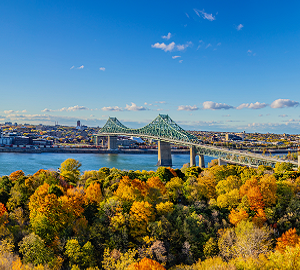In 1990, the USA launched its EB-5 investor visa programme in a bid to help boost the U.S. economy through job creation and capital investment from foreign investors. The programme was a huge hit and has grown and evolved over the years. During this time the EB-5 programme has seen several price changes and has been paused and adapted numerous times due to changes in Congress. But most importantly, the programme has been a huge success, giving immigrant investors from all over the world the opportunity to embark on ”the American dream” as well as generating billions of dollars for the US economy.
In June 2021, the programme was temporarily shut down when it failed to pass a unanimous consent vote in Congress. This left many investors in limbo. But earlier this year, on March 15, 2022, President Biden re-authorized the programme to start back up. He also signed the “EB-5 Reform and Integrity Act” which safeguards the programme with new integrity measures. This news was particularly great for the investors whose funds were already committed to an investment but who could not get their Green Cards because the program had been suspended.
The new EB5 legislation will be available until September 2027. The current investment threshold is now $1,050,000, but investors can also apply via a lower investment route at $800,000 providing they invest in qualifying TEA projects (targeted employment areas). La Vida offers several projects which qualify under this category.
No more EB5 delays for high-demand countries
The new law sets aside 32% of the annual EB-5 immigrant visa quota for specific types of TEA projects. Investment in such projects will further encourage the flow of investment capital into regions that need it the most. The types of projects are as follows:
- 20% of EB-5 immigrant visas are reserved for foreign nationals who invest in a rural area of the United States;
- 10% are reserved for foreign nationals investing in a high unemployment area as designated by USCIS;
- 2% are reserved for investors in a new category for qualifying infrastructure projects administered by a federal, state or local government entity.
Applicants investing in a rural project will also receive priority processing, meaning that the I-526 petition (the initial application for the temporary residency visa) can be processed in under a year, following investment. With the standard regional centre projects, processing of the I-526 can take several years or more.
In addition to the above, every fiscal year, the US determine how many spaces it will allocate to EB5 visas. Each country is entitled to roughly 7% of the annual total. This is plenty if you are from a small country where demand for EB5 is low, such as the UK, for example. But if you are from a larger country where the demand for immigration is much higher, such as China, Vietnam or India, then the 7% application quote historically fills up quickly and applicants from these countries will have to join a long queue before they can apply. In recent years, the backlog from such countries has grown so much that applicants from these locations were looking at waiting years before they could apply, in some cases as long as 5-7 years! Under the new EB-5 Reform and Integrity Act, any unused visas at the end of the year are reassigned to immigrant investors from high-demand countries. So if applicants from France have only used 3% of their quota, then the remaining spaces will be released to applicants from a higher-demand country. This new method will potentially open up thousands of extra spaces each year, clearing the backlog much faster.
For more details on the EB-5 programme and whether it is the right choice for you, please contact our experts for a free consultation.





